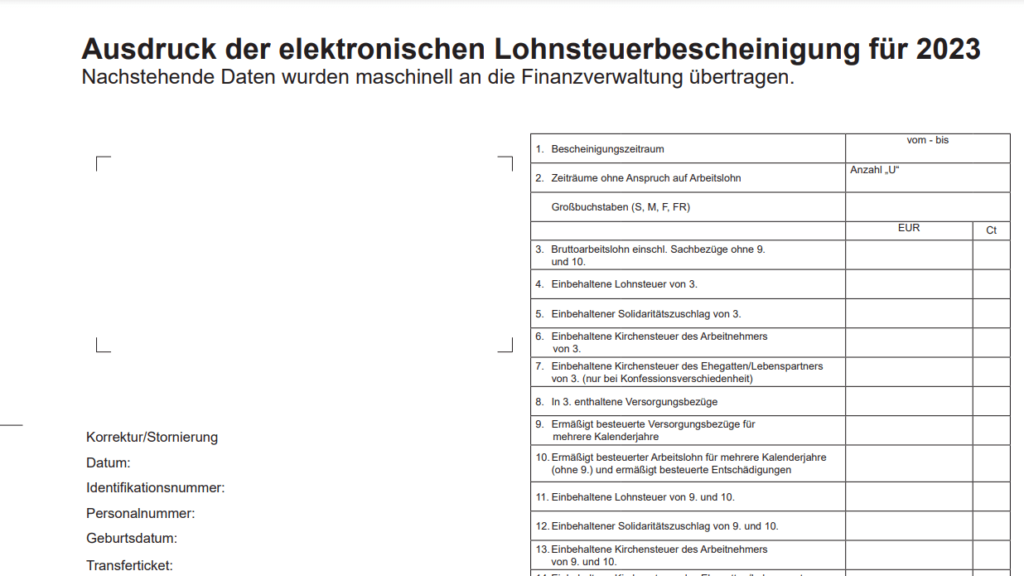The Solidaritätszuschlag, commonly known as the Solidarity Surcharge, is a supplementary tax in Germany that has been in place since 1991. Initially introduced as a temporary measure to support the costs of German reunification, it has persisted and evolved over the years. In this comprehensive guide, we’ll delve into the details of the Solidarity Surcharge, including its purpose, calculation, exemptions, and recent developments.
Historical Context: Origins and Evolution
The Solidarity Surcharge, or Solidaritätszuschlag, has its roots in the historical context of Germany’s reunification, a monumental event that took place in 1990. Understanding the origins and evolution of this supplementary tax provides insight into its initial purpose and subsequent transformations.
- Reunification of Germany (1990): In the late 1980s, the political landscape in Europe underwent significant changes. The fall of the Berlin Wall in 1989 marked a crucial turning point, leading to the reunification of East and West Germany in 1990. The reunification process was a historic event that brought together a divided nation, symbolizing the end of the Cold War era.
- Financial Challenges and Funding Reunification: The reunification process presented immense financial challenges for Germany. The costs associated with integrating the East and West, including infrastructure development, economic stabilization, and social welfare programs, were substantial. Recognizing the need for funding, the German government introduced the Solidarity Surcharge in 1991 as a temporary measure to contribute to the expenses of reunification.
- Original Intent as a Temporary Tax: The Solidarity Surcharge was initially conceived as a temporary tax with the specific goal of addressing the extraordinary financial burdens linked to reunification. The expectation was that, once the economic and social integration was achieved, the surcharge would be phased out.
- Evolution and Prolonged Existence: Despite its temporary designation, the Solidarity Surcharge persisted beyond its initial timeframe. Over the years, the surcharge evolved to encompass a broader range of government initiatives and projects beyond the scope of reunification. It became a consistent source of revenue for funding various public undertakings, leading to discussions about its continued relevance and potential reforms.
- Debates and Discussions: The longevity of the Solidarity Surcharge sparked debates and discussions among policymakers, economists, and the public. Some argued for its abolition, asserting that the original purpose had been fulfilled, while others advocated for its continuation as a means of addressing ongoing financial needs. The debates highlighted the complexities of balancing fiscal responsibility with changing economic and social landscapes.
- Changes in Tax Laws: Over time, the Solidarity Surcharge underwent changes in response to economic conditions and political considerations. These changes included adjustments to the threshold for exemptions, modifications to the rate, and discussions about its potential phase-out for certain groups of taxpayers.
- Current Status and Future Outlook: As of the latest information available, the Solidarity Surcharge continued to be levied, but discussions about its future persisted. The historical context underscores the adaptability of tax policies in responding to unique historical events and the evolving needs of a unified Germany.
Taxpayers Affected: Individuals, Corporations, and More
The Solidarity Surcharge in Germany is not exclusive to a particular group of taxpayers; instead, it broadly applies to both individuals and corporations, with certain other entities falling under its scope. The primary focus is on income and capital gains taxes, making it relevant for individuals who earn income and corporations that generate profits.
- Individuals: For individual taxpayers, the Solidaritätszuschlag is linked to their income tax liability. This includes various sources of income, such as wages, self-employment income, and capital gains. The tax is designed to ensure that individuals contribute a proportional amount towards funding government initiatives and projects, particularly those stemming from the costs of German reunification.
- Corporations: Corporations are also subject to the Solidarity Surcharge, and the calculation is tied to their corporate tax liability. This means that a percentage of the corporate tax amount is earmarked as the Solidaritätszuschlag. This mechanism extends the tax burden to the business sector, aligning with the broader objective of distributing the financial responsibility for societal development and infrastructure improvements.
- Other Entities: Beyond individuals and corporations, certain other entities may also be subject to the Solidarity Surcharge. The specifics can vary, and it is important to consider the legal structure and nature of the entity to determine its tax obligations. The inclusion of a diverse range of taxpayers underscores the government’s approach to ensuring a collective contribution towards national development.
Recent Developments: Changes in Calculation and Exemptions
- Since 2021, changes in the calculation of the solidarity surcharge have been implemented. On November 14, 2019, the Bundestag passed a law to diminish the solidarity surcharge, resulting in its complete elimination for approximately 90% of previous contributors starting in 2021. For instance, in 2022, single individuals with gross annual earnings up to 75,000 euros are exempt. Notably, the solidarity surcharge on investment income persists.
- In 2023, the exemption limit will rise to over 17,500 euros, providing relief for about 90% of taxpayers exempt from the solidarity surcharge since 2021. The annual exemption limit, which signifies the threshold below which no solidarity surcharge is applicable, has significantly increased. For single taxpayers, it has surged from 972 euros to 16,956 euros, and for joint taxpayers, from 1,944 euros to 33,912 euros.
- If the maximum standard rate of income tax in 2022 does not exceed €16,956 (or €33,912 for married couples), no solidarity surcharge is levied. In 2023, the annual exemption limit further increases to €17,543 (€35,086 for couples), and in 2024, it reaches €18,130 (€36,260 for couples). Consequently, no solidarity surcharge will be applicable from the respective values in 2023 and 2024.
Mitigation Zone: A Balanced Tax Approach
- Beginning in 2021, an additional 6.5 percent of taxpayers, specifically those with slightly higher incomes, now experience a somewhat lighter tax load. This category encompasses individuals such as singles earning gross annual incomes ranging from just over €75,000 to €110,500 (2022).
- Individuals falling within this income range find themselves in what is termed a “mitigation zone.” This zone extends from the exemption limit to an income tax liability of €31,528 in 2022, serving to prevent abrupt spikes in tax burden. This precautionary measure is in place to avoid full payment of the 5.5 percent solidarity surcharge if the income tax liability exceeds the defined exemption limit by just a few euros.
- Within the mitigation zone, the solidarity surcharge incrementally rises with increasing income until it reaches the full rate of 5.5 percent. For instance, in 2022, a childless single person with a gross annual income of €80,000 pays a 1.3 percent solidarity surcharge on their income tax. At €100,000, this surcharge increases to 4.5 percent.
- However, approximately 3.5 percent of taxpayers are not eligible for relief and must continue to pay the solidarity surcharge in its entirety. According to calculations by the Federal Ministry of Finance (BMF), this applies if the taxable income in 2022 exceeds €96,409 for single individuals or €192,818 for married couples, equivalent to a gross income of around €110,500 for a single person.
- Notably, there is no relief for prosperous investors, regardless of whether the employer provides a flat-rate wage.
Conclusion
The evolution of the Solidarity Surcharge reflects Germany’s commitment to adapting its tax policies in response to changing economic and social dynamics. The recent developments, including changes in exemptions and the creation of a mitigation zone, aim to strike a balance between fair taxation and economic growth. As taxpayers navigate this evolving landscape, staying informed about the latest regulations and exemptions is crucial for a comprehensive understanding of the Solidarity Surcharge in Germany.


